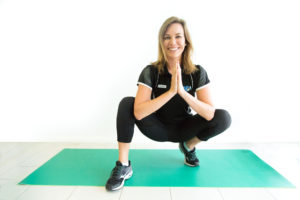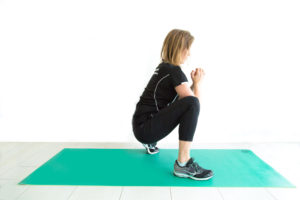
So, who’s ankle is this?
C’mon man, don’t you know a female from a male ankle? What are you looking at anyway? Look close now and you will see Silvana Lima in all her aerial glory…she’s stuck with the grab rail and always on the edge! ![]()
All about ankles…

Article review by Glenn T Goodwin, PhD, DABFE
With today’s aerial game in full-on progressive mode, ankles have received increased attention due to the vulnerability of the ankle in landing most of the aerial maneuvers…even with more traditional surfing, your pop-up, foot placement and even rail game and hits to some degree, puts stress on your ankles…in spite of this, its interesting that ankle injuries were seldom heard of in the pre-aerial age of surfing, but now its fairly common to hear about ankle sprains, strains and even fractures…
This article and ankle strengthening exercises is a good read from Surfing Life down in Oz; the premier Australian source of all things surfing since 1985. Cara-Lee Goullée is a Senior Physio at Stoke Physio in North Beach…
Strong ankles make for strong surfing…
As a surfer, the contact between your feet and your board is one of the most crucial aspects of wave riding. Your feet and ankles are put under constant pressure as you continually jump up and lean into turns, and if you have any sort of imbalances going on, then injuries are almost a certainty. The most common ankle issue we see on surfers is Ankle Hypomobility (or stiffness).
This problem is characterised by difficulty getting low on the board, lack of power when carving and discomfort when trying to pop up and turn big in the pocket or off the lip. It is most often caused by an old ankle injury, such as a rolled ankle, that has never healed properly.
But don’t wig out!
Here’s three exercises that will improve mobility and strengthen your ankles and help make sure that you avoid ankle injuries when out on the water.
Exercise 1: Primitive Squat (Photos 1 and 2 above)
Stand in a wide squat stance with feet turned outwards and squat down so that you are in the deepest position you can be. Make sure to hold the arches of your feet up and not allow your ankle to collapse in. Keep your back straight, elbows on the inside of your thighs and try and hold this position for a minute.
Exercise 2: Duck Walking (Photos 3 and 4 above)
Carrying on from the primitive squat, stay in your deep squat stance and then travel forward in that position, like a duck.
Exercise 3: Lunges (Photo 5, above)
Lunges are a great way to work on stability and mobility of the ankles. Make this harder by putting your front foot on an unstable surface, such as a bosu ball.
Here’s to keeping your edge from head to toe…











